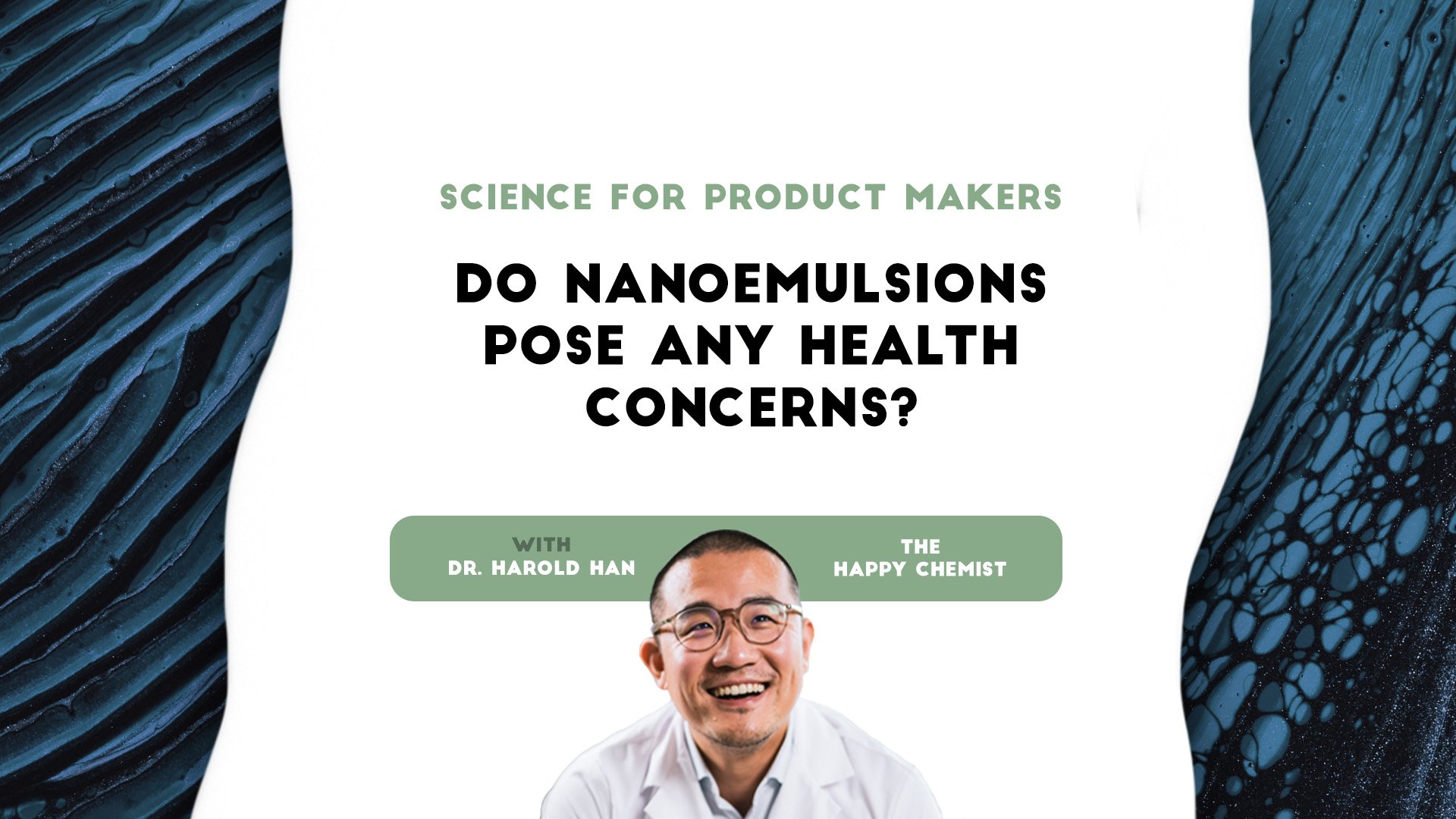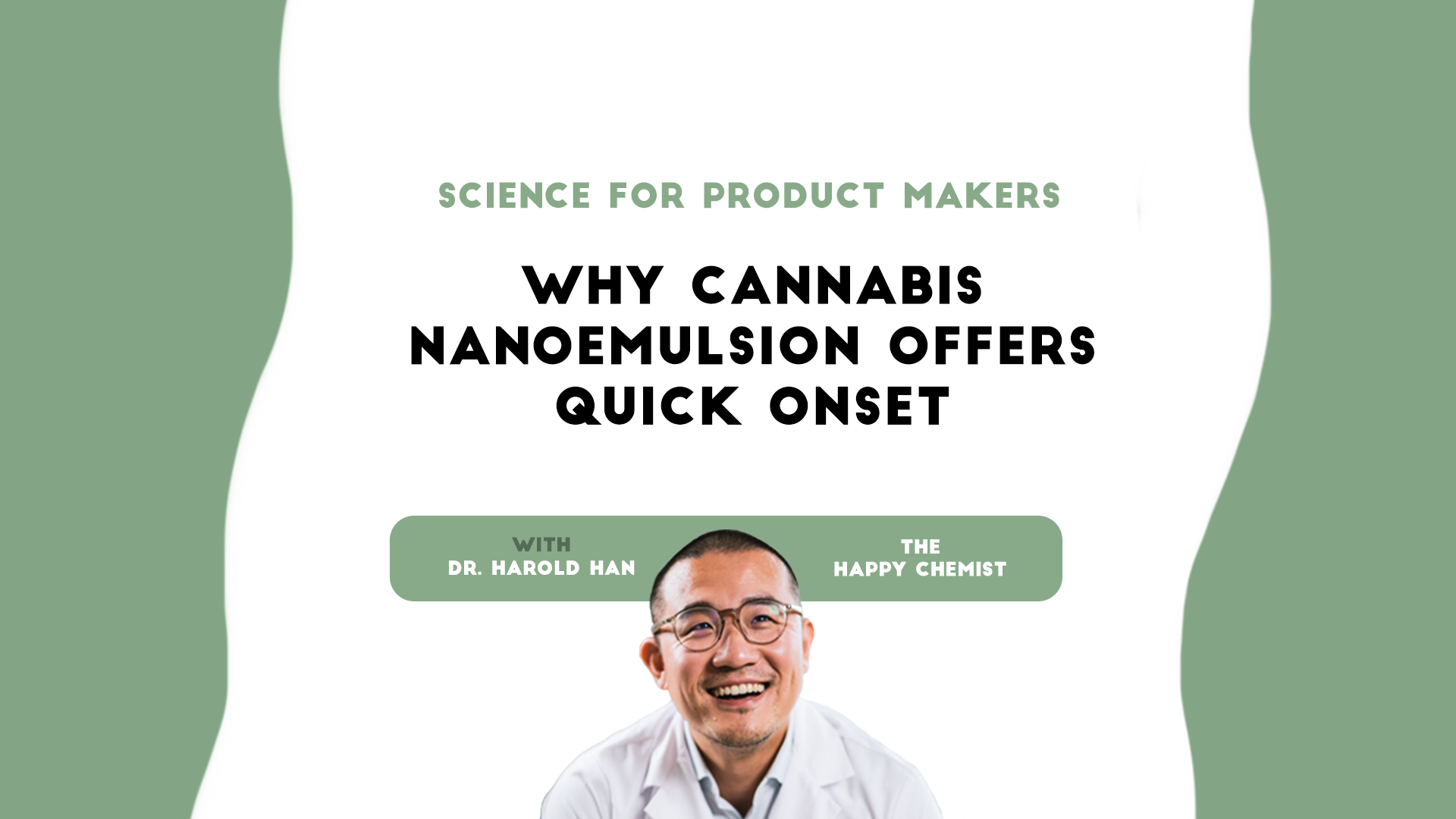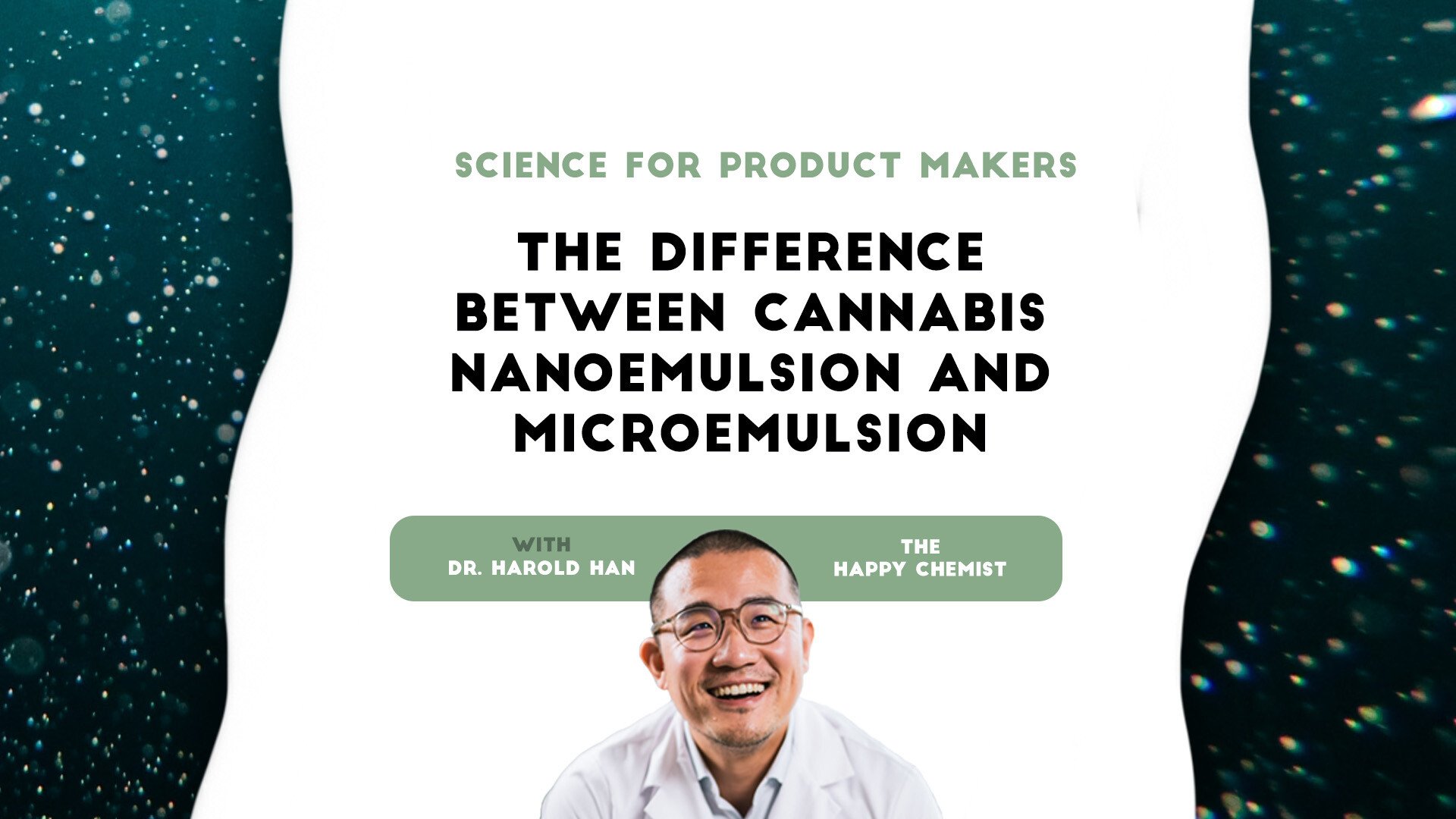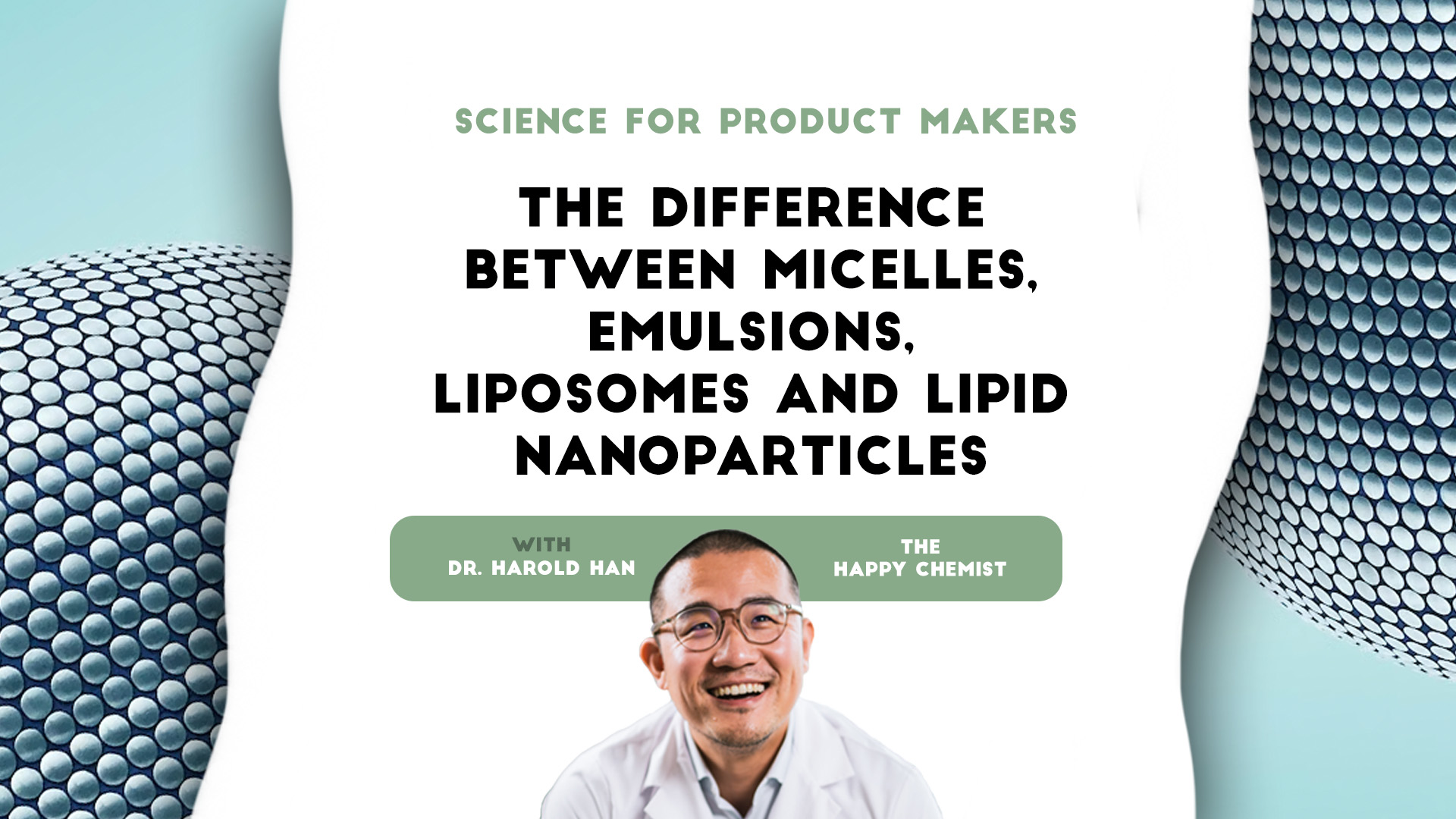Science for product makers: Why cannabis nanoemulsion offers quick onset
This post is also published as an article on Harold's LinkedIn profile. You can read and leave comments here. Our industry generally agrees that...
2 min read
 Dr. Harold Han - "The Happy Chemist"
:
6/28/24 8:10 PM
Dr. Harold Han - "The Happy Chemist"
:
6/28/24 8:10 PM

This post is also published as an article on Harold's LinkedIn profile. You can read and leave comments here.
The word “nano”means one billionth, so it’s no surprise that adding the suffix implies smallness. When used to describe a technology, “nano” sounds cool and advanced. However, when used to describe a consumer product, “nano” has a storied history that some may associate with health risks.

From a recent survey, it seems people generally agree that nanoemulsions do not pose the same health risk as nanoparticles. But is it true? Here is my answer: for edible products, as long as the nanoemulsion uses GRAS ingredients, it is safe to consume. But if the nanoemulsion contains non-GRAS material, it may pose risks.

The “fear of nano” originated from consumer education around nanoparticles’ application in cosmetic products. In 1999, the FDA approved the use of Titanium dioxide (TiO2) nanoparticles in sunscreen. Those nanoparticles act like billions of tiny mirrors which reflect and scatter the UV light away from skin. However, some scientists argue the small particles may penetrate through the skin, enter the body, accumulate in certain organs and cause health issues. This concern is valid, but ultimately unrelated to nanoemulsions.
A nanoparticle is defined by having at least one dimension smaller than 100 nm. A nanoemulsion, however, is not defined by its size, but by its free energy status (check out my previous post on this topic). Nanoemulsion size is in the range of 30-1000 nm.
Nanoparticles usually consist of solid inorganic materials such as TiO₂, ZnO₂, gold or silica. However, food grade nanoemulsions use GRAS ingredients, such as coconut oil, gum acacia, flavor agent and other food ingredients.
The materials in nanoparticles are not digestible nor degradable, making it challenging for our body to eliminate them.
Nanoemulsions, however, can be absorbed, digested, metabolized and eliminated, provided that the ingredients are GRAS. Nanoemulsions made to those standards don’t accumulate within digestive organs and cause health issues like nanoparticles.

Table 1. Major differences between nanoemulsion and nanoparticle
Health concerns about nanoparticles are valid and should be continuously discussed, however nanoemulsions, when made with all GRAS ingredients, are safe to consume. Think of a cookie. If you grind it into a super fine powder, the powder is still safe to eat irrelevant to its size.

If you ground this cookie into a powder, it would still be safe to eat (as long as it was made with edible ingredients).
Here is the ultimate question for our industry: is cannabis nanoemulsion safe to consume? The determining factor is not the nanoemulsion (as long as all inactive ingredients are GRAS), the active ingredient: the cannabinoids. To this day, no cannabinoids have been granted GRAS status. To push the industry forward, we need toxicology studies on individual cannabinoids, which would eventually lead to a GRAS allowance from the FDA. For the last 100 years, groups like FEMA (Flavor Extract Manufacturers Association) have achieved GRAS allowance for many flavor ingredients. I believe the same can be done for the cannabis industry.
Dr. Harold Han — the “Happy Chemist” — combines his storied background in emulsion chemistry and science with curiosity and fascination in the rapidly growing cannabis industry. Developing nano and micro emulsions his entire career, Harold holds a Ph.D in Surface Chemistry from NYU and is the inventor of multiple patents in emulsion chemistry.
As the Chief Science Officer at Vertosa, Harold spearheads the company’s development of industry-leading and customized active ingredients for infused product makers, offering pre-suspended aqueous solutions to create incredibly homogenous and stable products while maximizing bioavailability, clarity, and taste.
To learn more about the science of cannabis, check out Harold’s Happy Chemist videos.

This post is also published as an article on Harold's LinkedIn profile. You can read and leave comments here. Our industry generally agrees that...

This post is also published as an article on Harold's LinkedIn profile. You can read and leave comments here.

This post is also published as an article on Harold's LinkedIn profile. You can read and leave comments here.